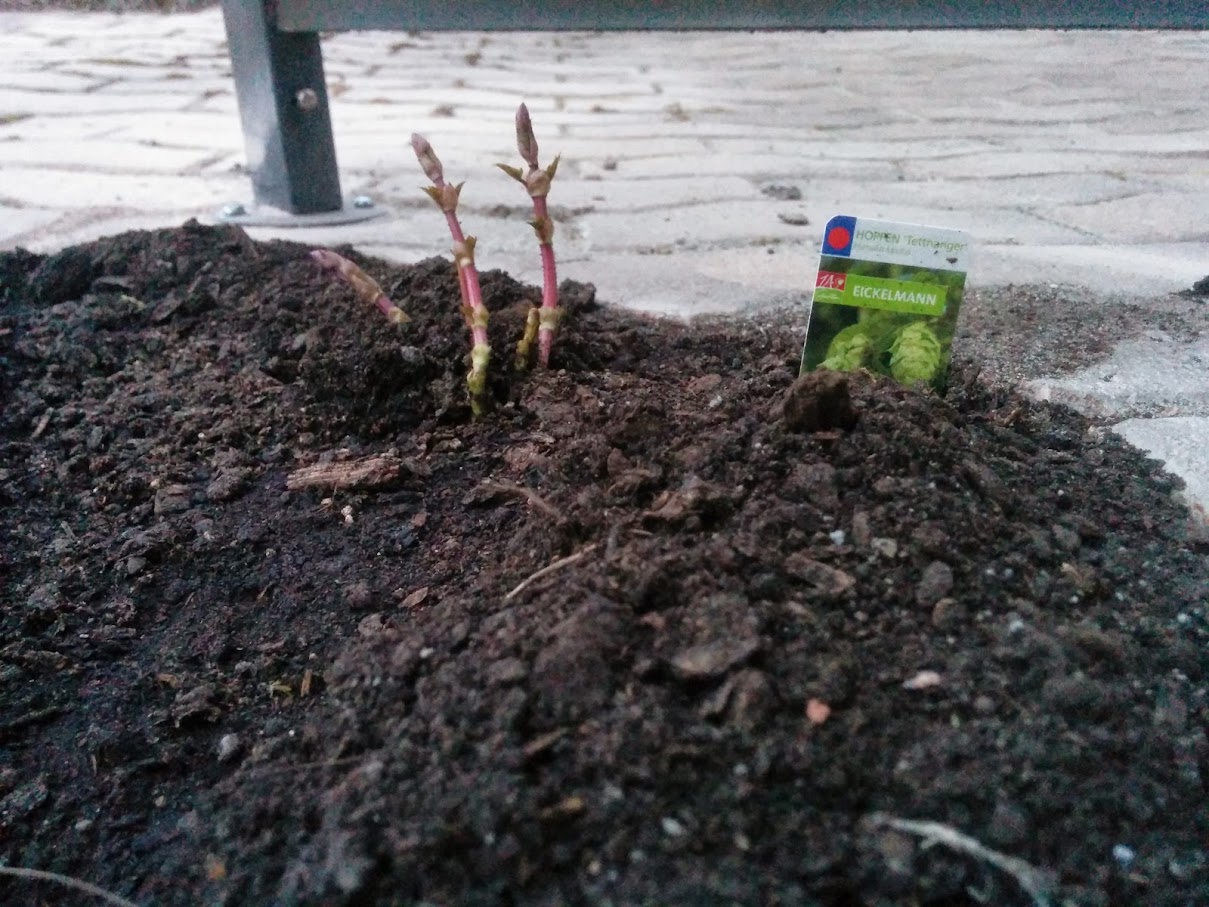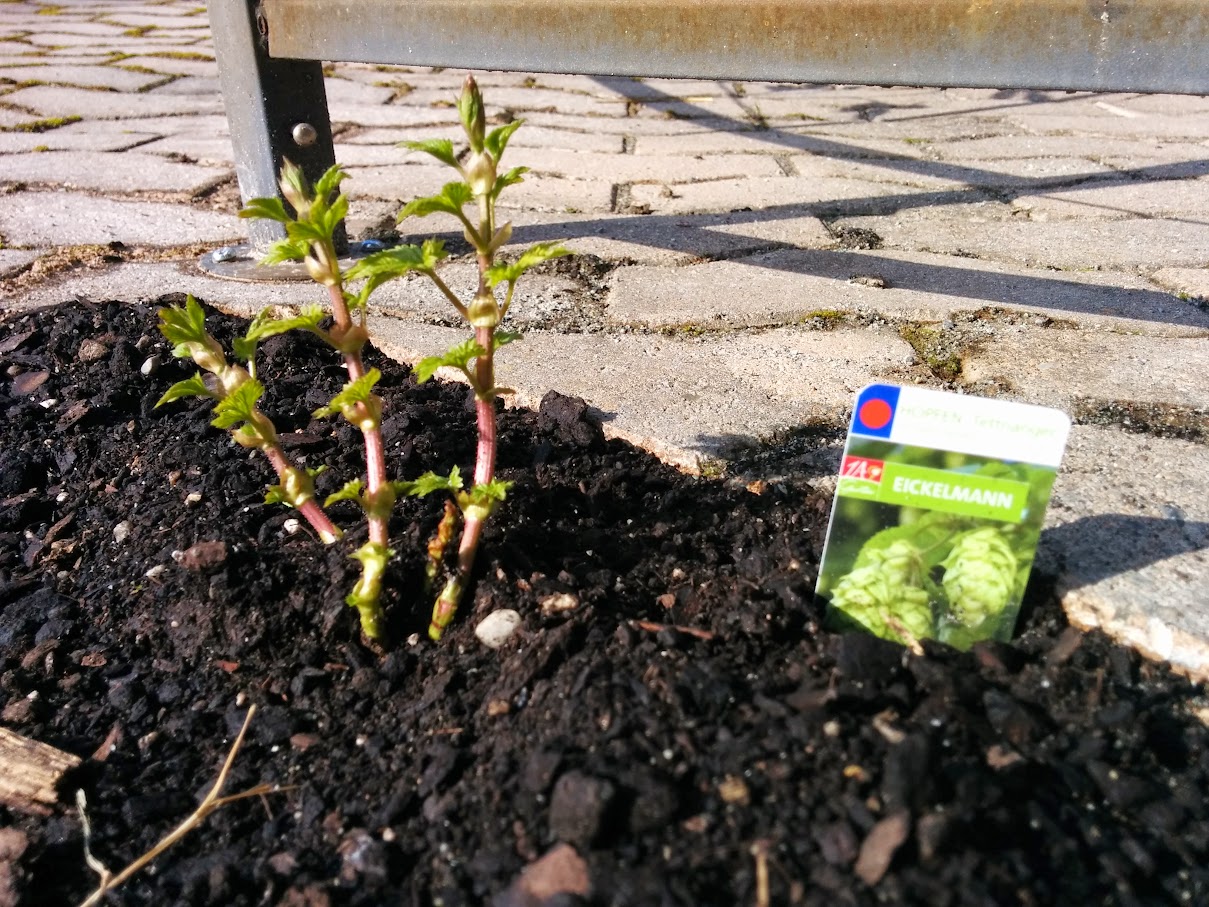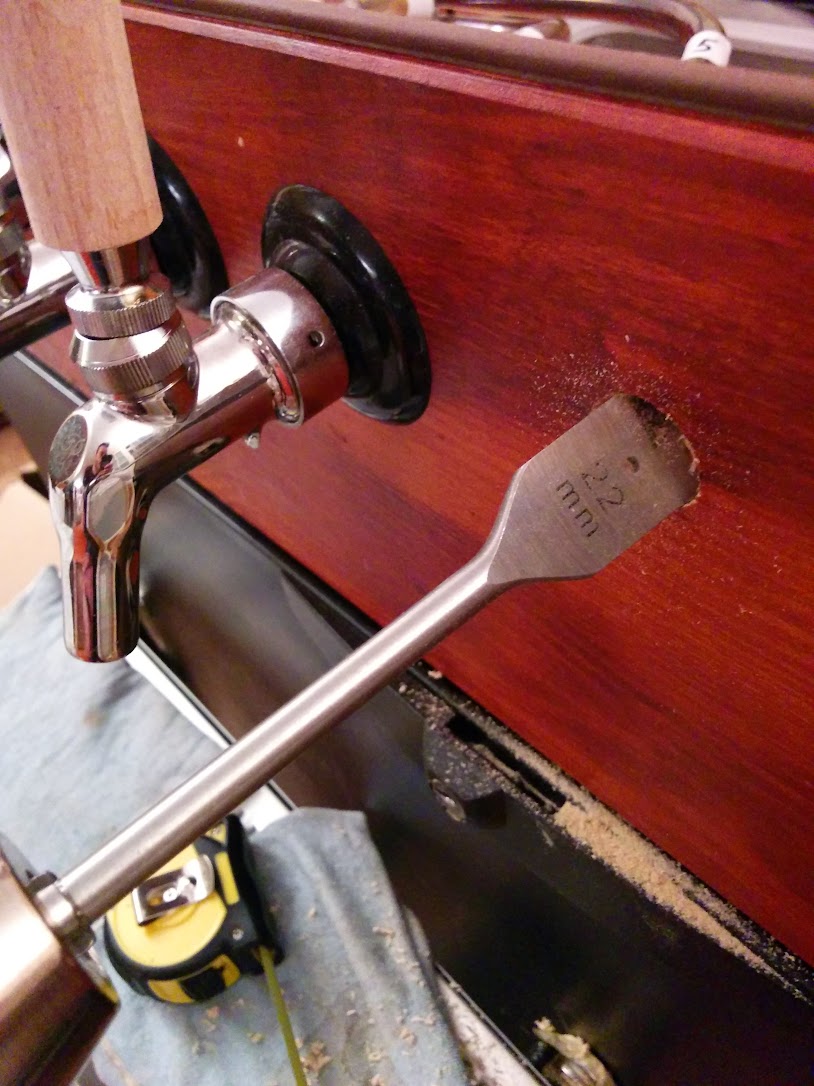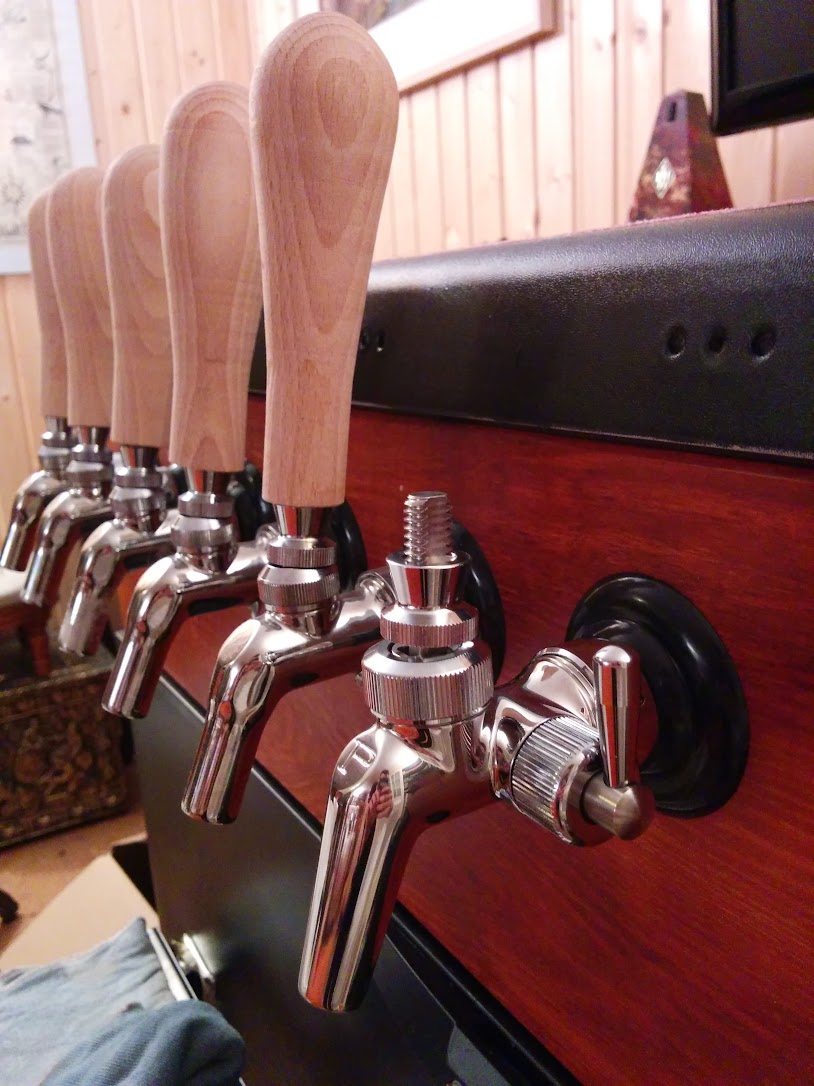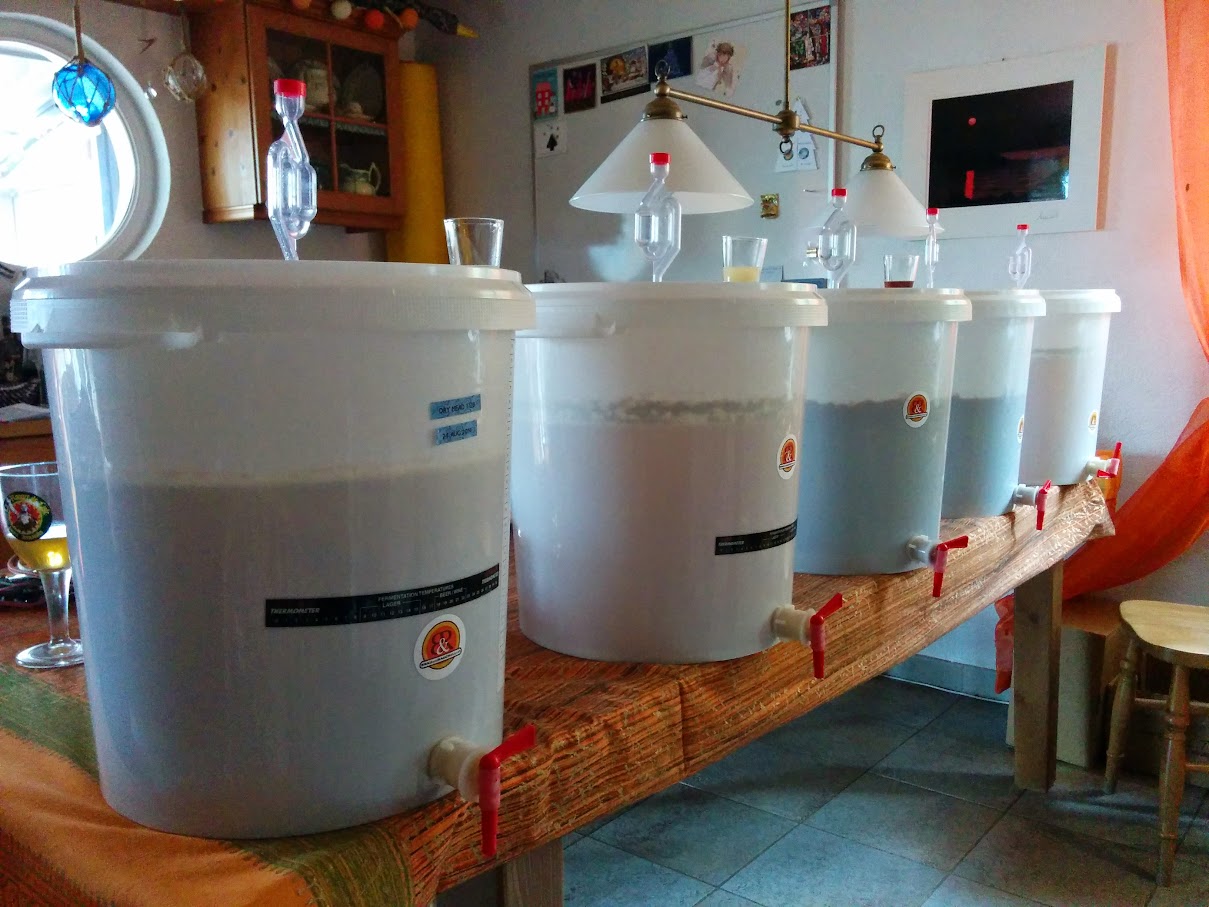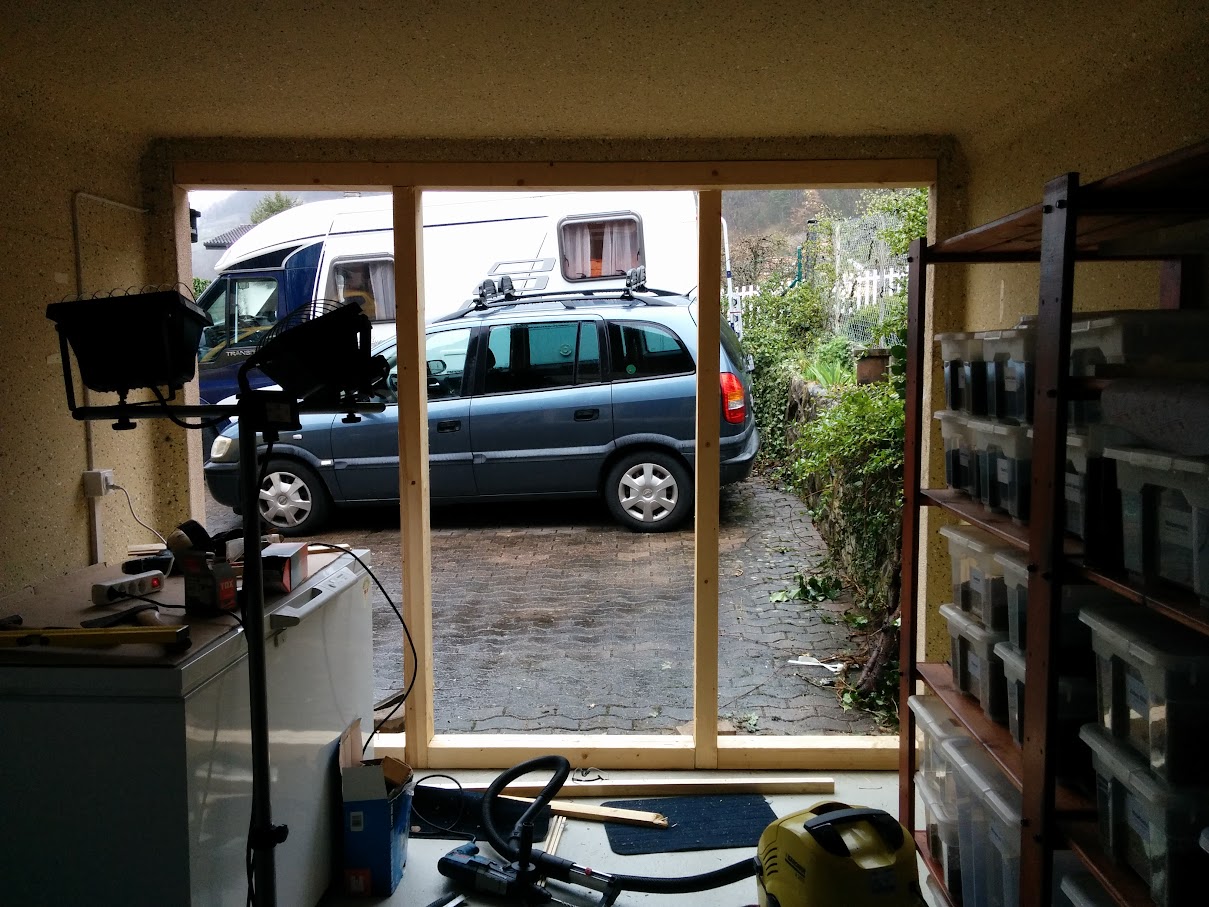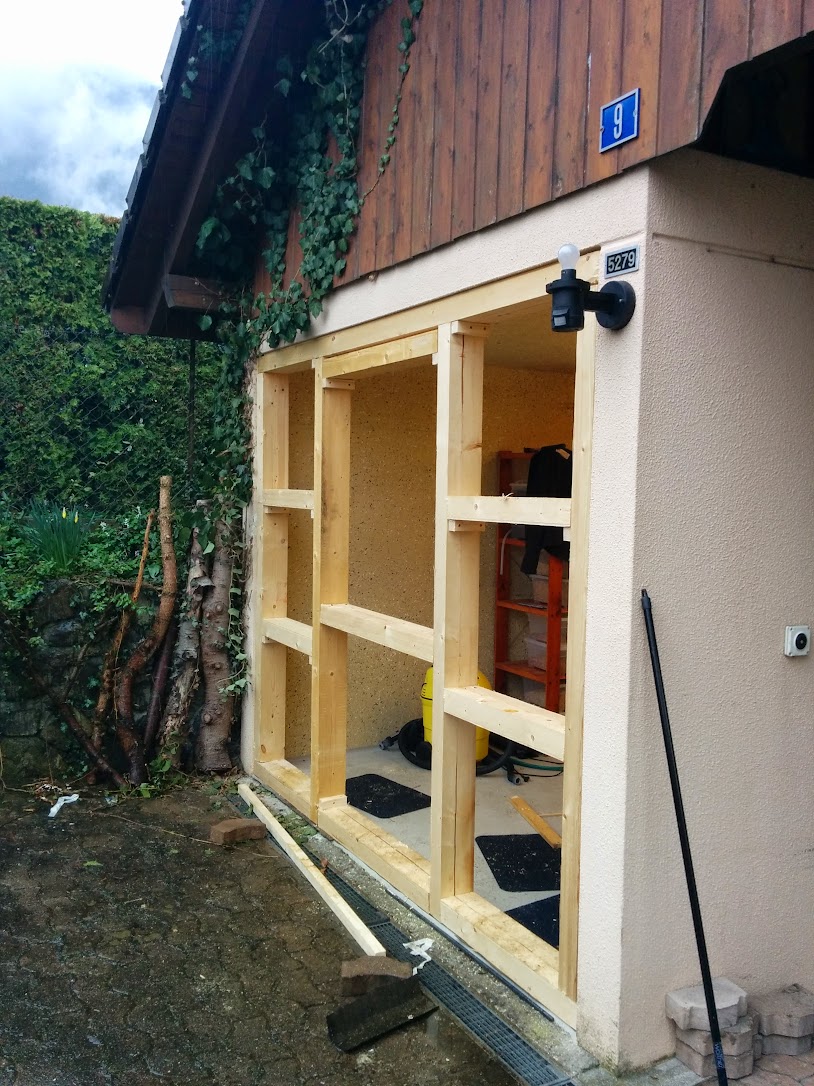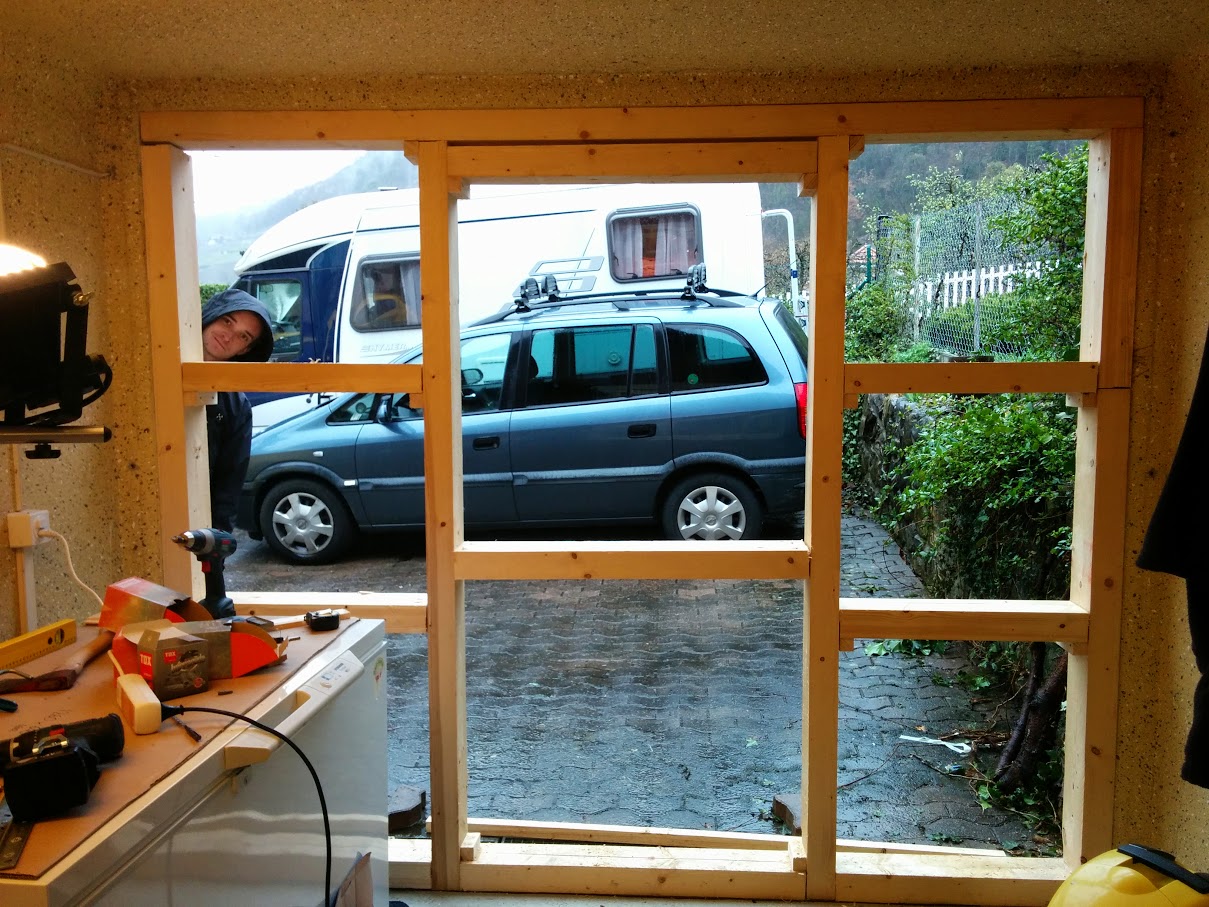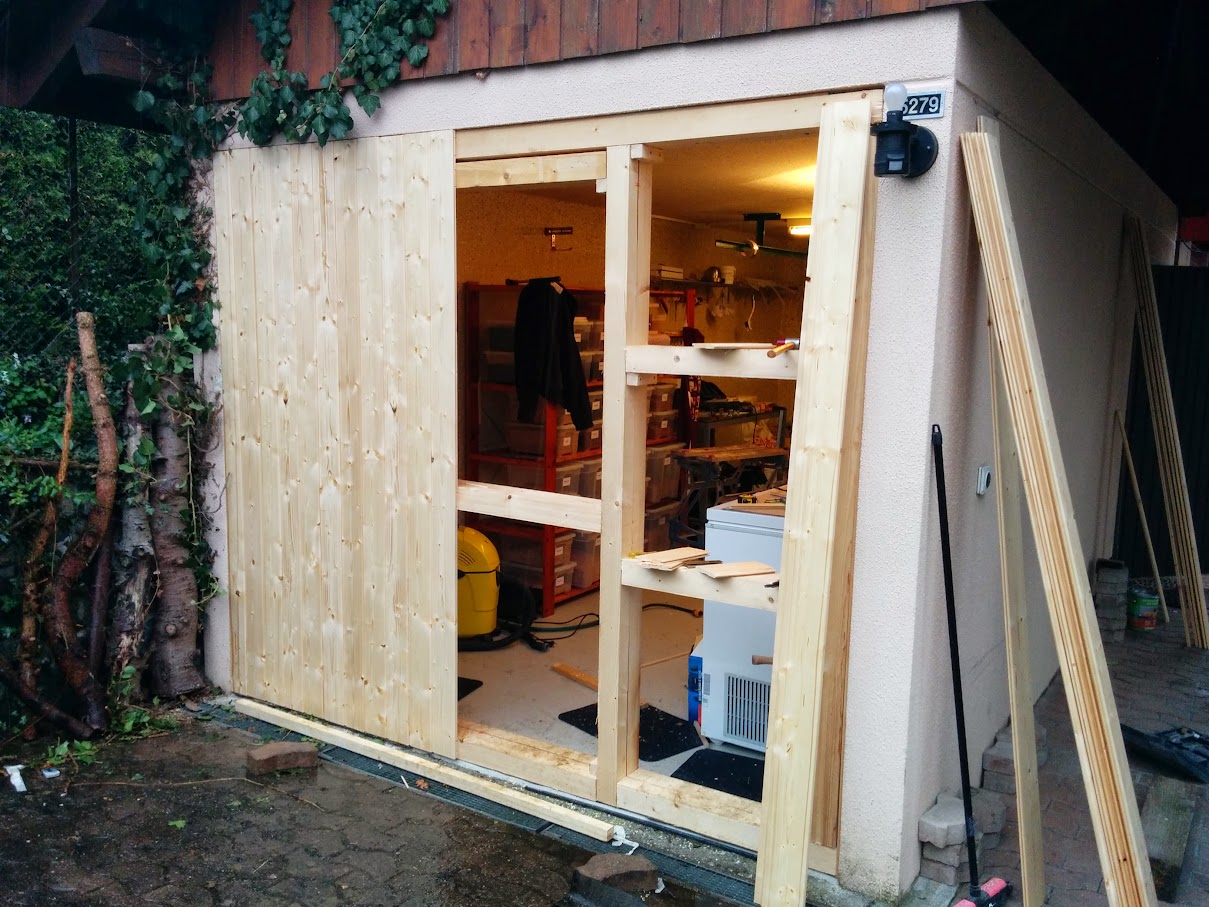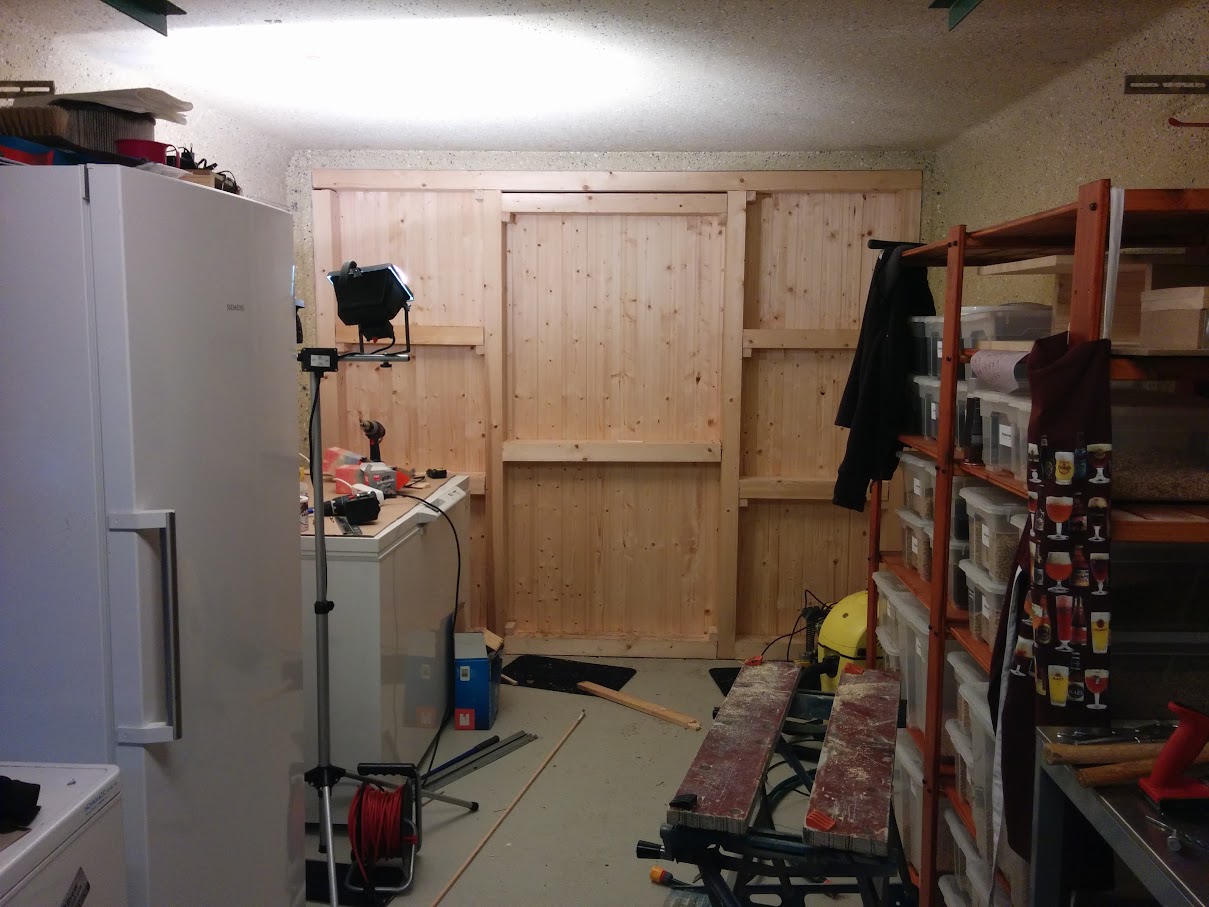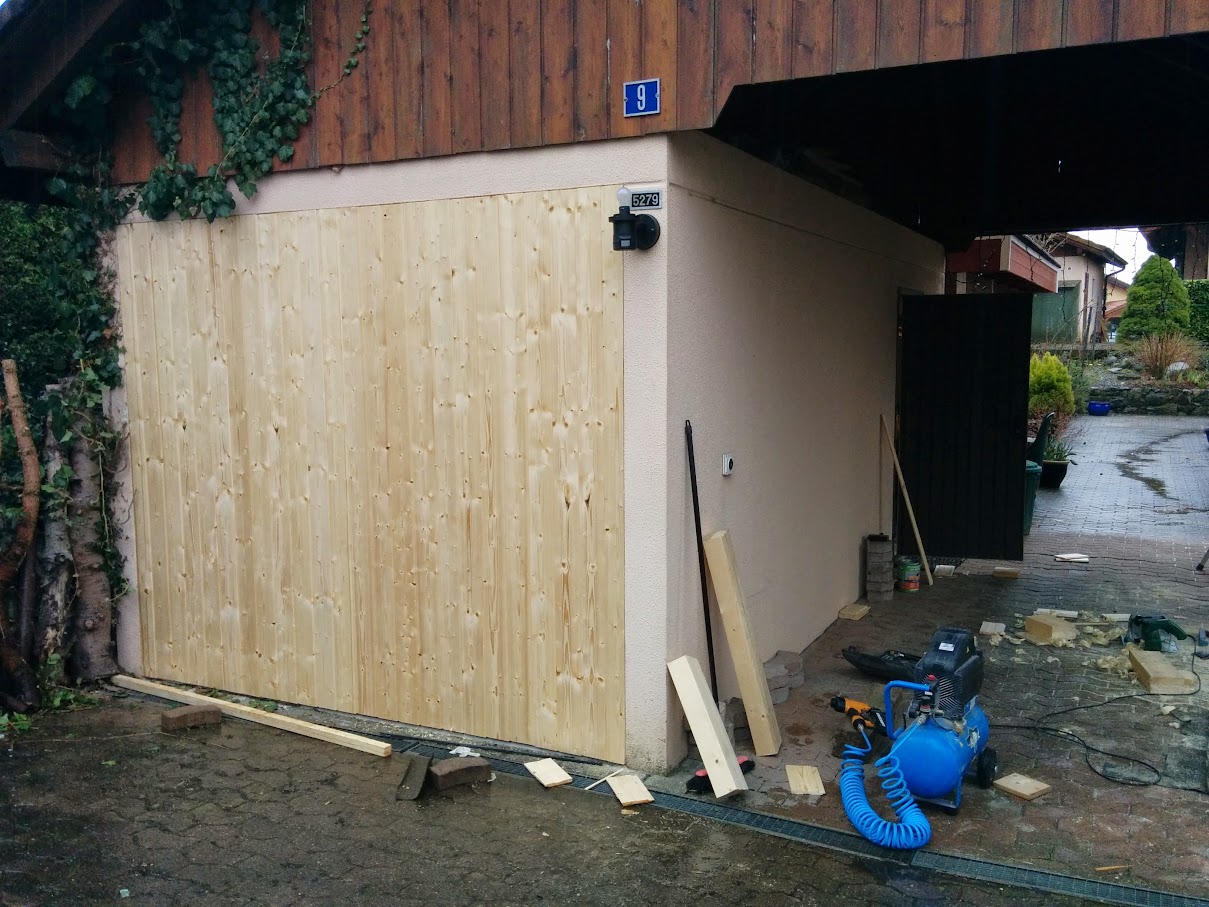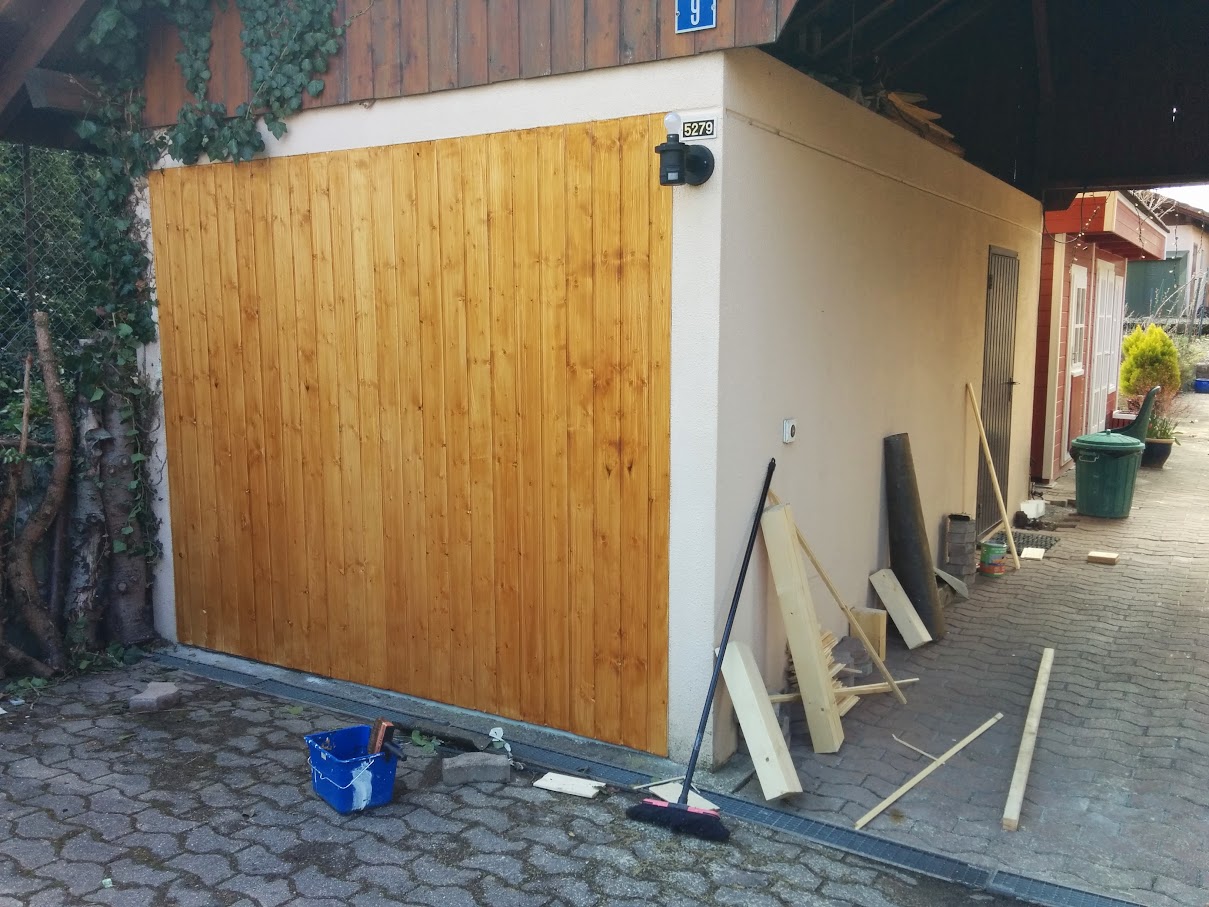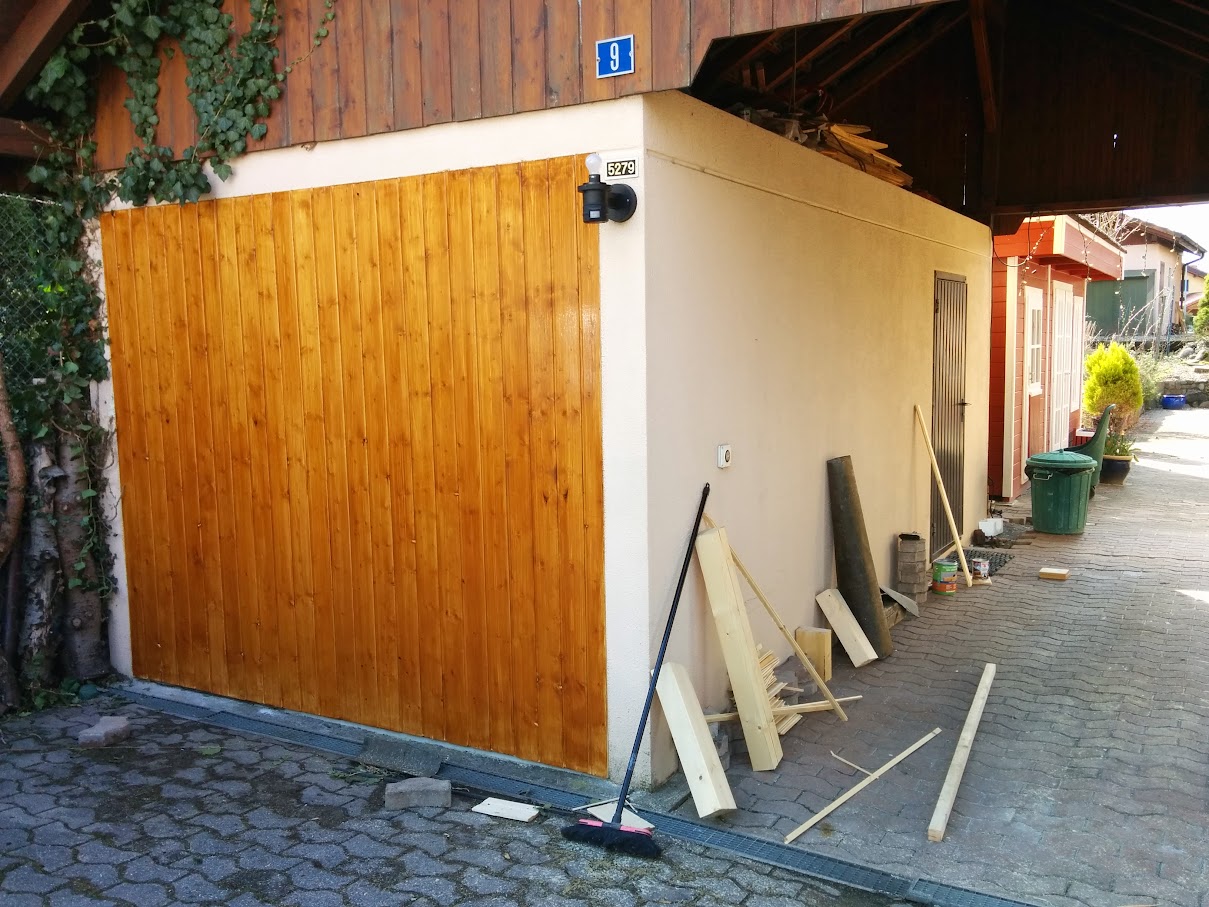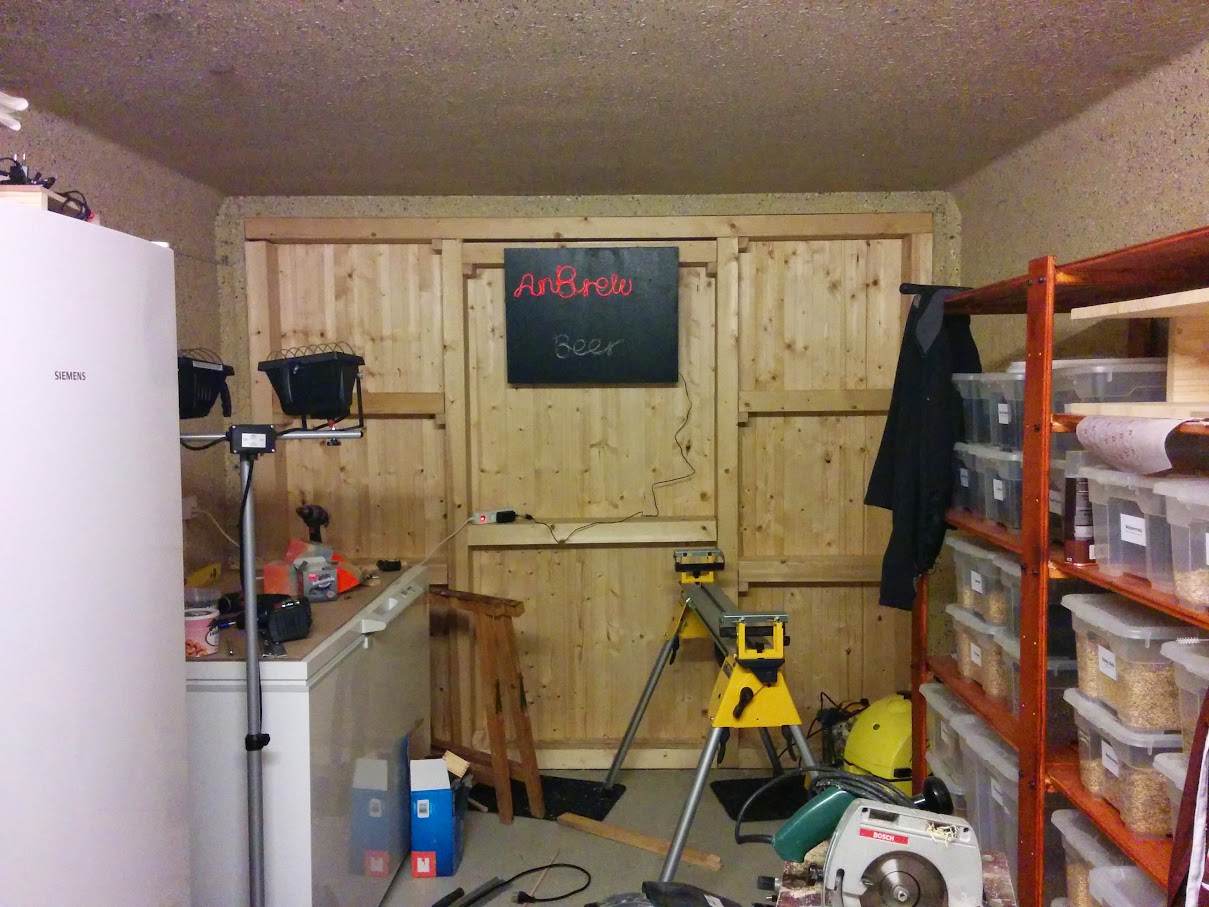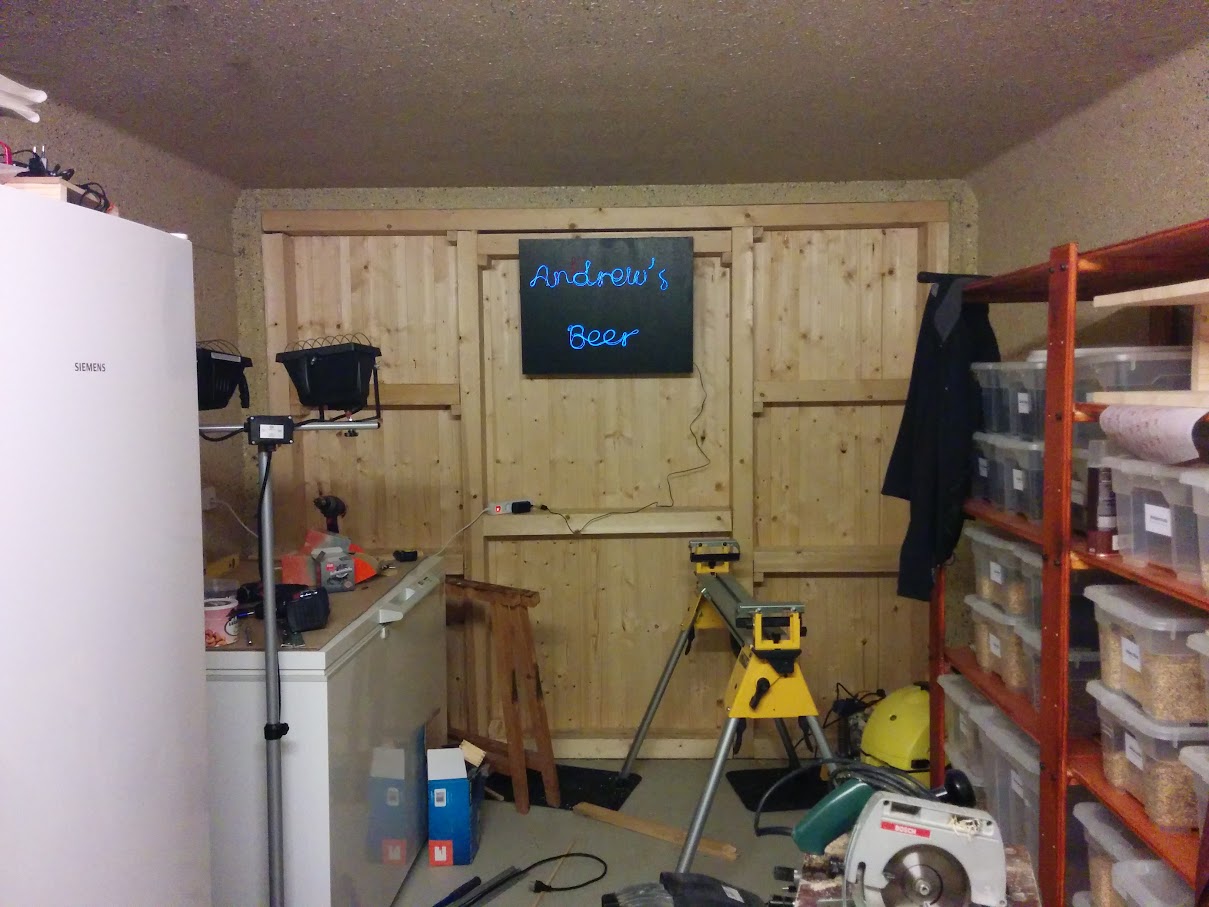As promised, now that spring is upon us again, Ive picked up the brewery build for this year. I have a lot of plans (most of which Ive outlined in the previous post), so well see if I can find the time (and money

) to get all of them done before the winter. Im hoping to finally have a nice and cozy place to brew before it gets cold again, with storage for everything I need, a sink to clean everything in place, and sufficient space to ferment a whole double-batch if not two.
Before we get started, a little distraction. Ordered some hop rhizomes from France and planted them around the gazebo on the terrace
And here they are just a week later:
Decided I wanted to test the new flow control perlicks and put the 6th space of my kegerator to good use, so I drilled a new hole and installed another tap
I also kegged a few more batches of homebrew for the upcoming tasting party

Now for the real stuff.
Chopped up some lumber
Removed the awful steel garage door
And started building a frame around the opening to support a wall
Next we got to work with the nail gun + compressor and the panels I had cut to length the previous day
And heres what it looks like after one and two coats of wood stain
Now I can finally use all the space in the back of the brewery AND the ceiling (which was covered up when we opened the door), install some proper ceiling lights for the back, and most importantly, I have a space for this wonderful addition that some friends made for me for the first tasting party
Next step: remove absolutely everything from the brewery, sand down the paint, apply a fresh and smooth coat of paint on the walls and ceiling, and some smooth epoxy for the floor!


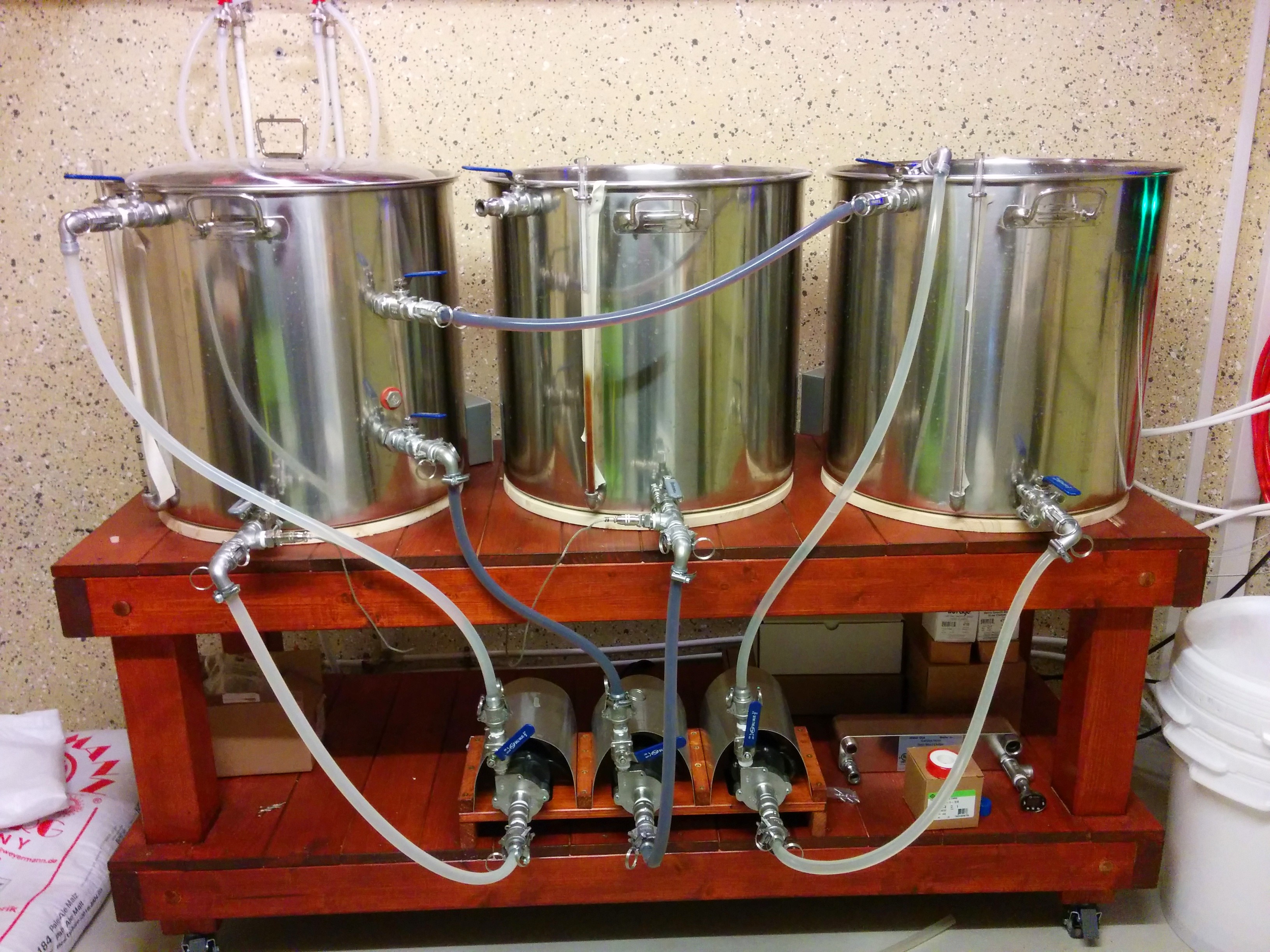

















![Craft A Brew - Safale BE-256 Yeast - Fermentis - Belgian Ale Dry Yeast - For Belgian & Strong Ales - Ingredients for Home Brewing - Beer Making Supplies - [3 Pack]](https://m.media-amazon.com/images/I/51bcKEwQmWL._SL500_.jpg)






































